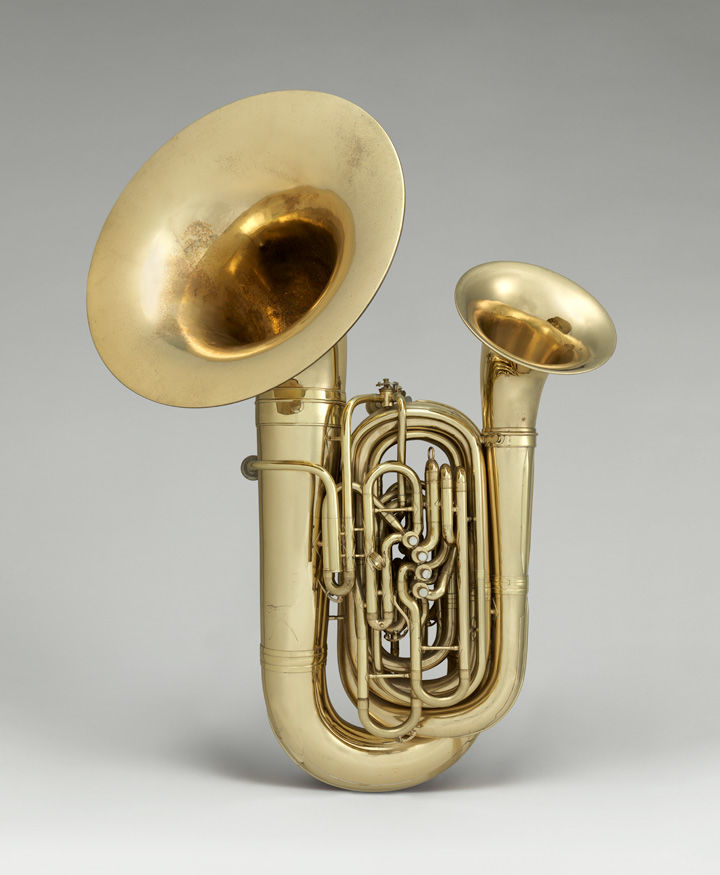Double tuba and baritone, "Bellophone" in BB-flat
H. N. White Co. American
This singular instrument was made to the specifications of the distinguished performer and teacher William Bell, who set modern standards for tuba playing in America. Through this feat of brass instrument engineering and construction, Bell sought one instrument capable of playing the wide range called for in the tuba and low brass parts of orchestral and band repertoire. Typically, players would need to switch between bass tubas and tenor tubas or baritones built in a variety of keys and sizes to handle these parts. The "Bellophone" alleviated the need for a tuba player to have several instruments at hand during a performance. To achieve this, the instrument was built to function both as a tuba and as a baritone. It has two separate bells but a shared set of four Périnet valves. A separate rotary valve directs air into either the baritone or tuba section of the instrument. Of the two mouthpiece receivers, one serves both instruments and leads to the rotary change valve; the other allows the tuba to be played independently. Two players can thus play the instrument simultaneously. Bell performed on this Bellophone in the Cincinnati Symphony, the Band of America, and the Goldman Band.
Due to rights restrictions, this image cannot be enlarged, viewed at full screen, or downloaded.




